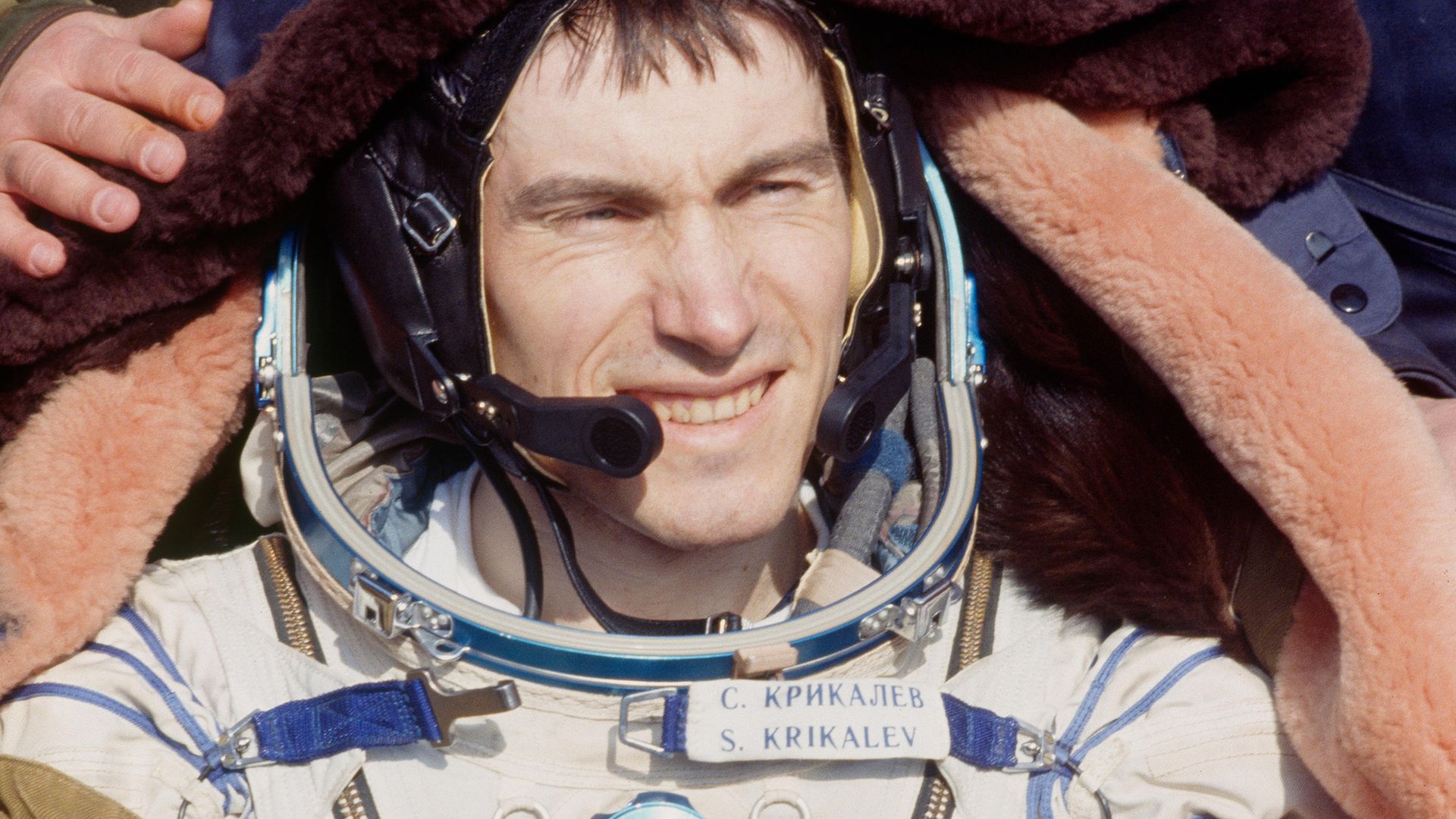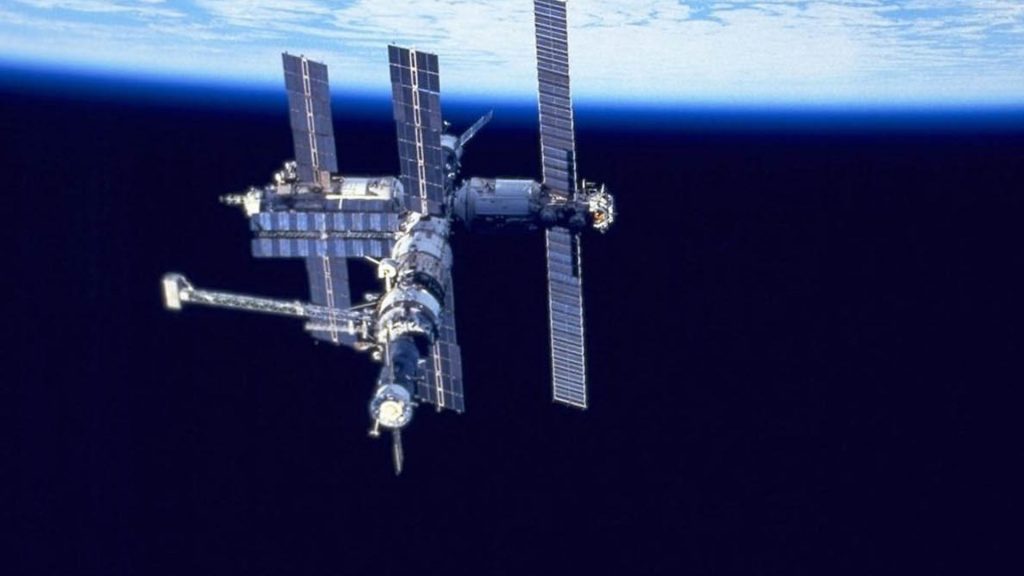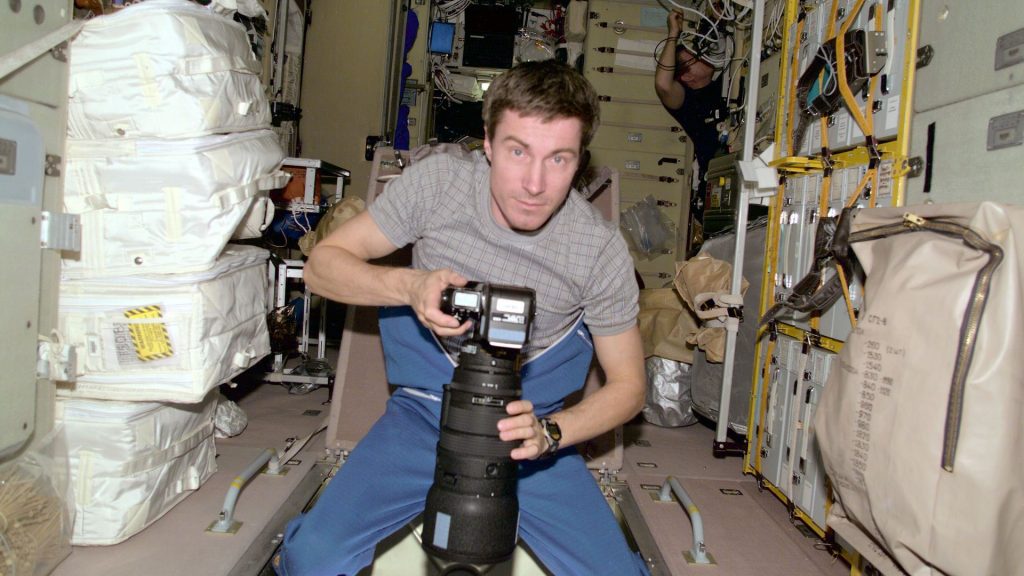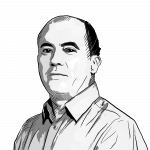
Sergei Krikalev went into space as a citizen of the USSR. While he was away, his country ceased to exist and he was left stranded in orbit. On its 30th anniversary, MICK O’HARE tells the astonishing story of his flight.
On 19 August 1991 Boris Yeltsin, newly elected president of the Russian Soviet Republic, stood atop a tank outside the parliament building in Moscow. Using fiery rhetoric he denounced the coup d’état that was attempting to overthrow the reformist president of the Soviet Union Mikhail Gorbachev and reinstate hardline communism.
As the world watched, Yeltsin’s defiance and public support for his bravery compelled the military to step down. It was his finest hour. The insurgents fled and Gorbachev returned from house arrest in Crimea to resume his position as head of state.
But more was to come from Yeltsin. Within days he had usurped Gorbachev, denouncing and humiliating his rival in parliament. Gorbachev’s power waned, the Soviet Union began to dissolve into its constituent republics and finally ceased to exist on Christmas Day 1991. Yeltsin became the first post-Soviet president of independent Russia.
All of which left Sergei Krikalev in a bit of a pickle.
As the hammer and sickle was removed from above the Kremlin he was 350 kilometres from Russia, sometimes a lot more, and struggling to find out what was happening, as he orbited the Earth at 7.7km a second.
Krikalev would become the Soviet Union’s last cosmonaut – the termination of a historical thread that began in 1961 with the first man in space Yuri Gagarin, took in the first woman in space Valentina Tereshkova, the first space-walker Alexei Leonov and the first occupants of the Mir space station Leonid Kizim and Vladimir Solovyov, which is where Krikalev was sitting as Yeltsin was condemning the putsch, orbiting above a radically changing planet.
There were few rumblings of the momentous changes that lay ahead when he had launched from Baikonur cosmodrome in Kazakhstan 30 years ago, on May 18, 1991 –almost 30 years to the day since Gagarin’s historic flight – alongside the first British cosmonaut and first woman to visit Mir, Helen Sharman, and fellow Soviet Anatoly Artsebarsky.
Hours later they docked with Mir. It wasn’t straightforward; the automatic systems failed and Krikalev approached the station manually, relying on his accuracy with the controls. Sharman remembers it was “tricky and risky, but Sergei’s aim was true”.
He was living up to his reputation. As a ground engineer he had been part of the team that planned the intrepid in-orbit rescue of the Salyut 7 station in 1985 after it began tumbling in space. Space historian David Portree described the mission as “one of the most impressive feats of in-space repairs in history”.
And now, as flight engineer for Mir, Krikalev’s task was to maintain systems and infrastructure inside and outside the station. While Sharman would only spend eight days on Mir, Krikalev and Artsebarsky were expecting to stay a little longer until the next relief flight arrived later in the summer.
He’d already spent five months there two years previously and was well aware of the effects of long-term spaceflight. They weren’t something he especially enjoyed. His muscles would atrophy, his bone density would fall, there was the risk of cancer from long exposure to radiation and months of confinement had deleterious effects on any cosmonaut’s psychological state.
Alas, for him, trouble was brewing down below. Gorbachev’s political and economic restructuring programme, known as perestroika, was failing and conversely, but consequently, dissent was growing. Money for the space programme, already something of an afterthought, was becoming scarcer. Over the decades space travel had become routine, mundane even.
It only made the news if there was catastrophic failure so the world was not holding its breath over the fate of Sergei Krikalev and his colleague. Indeed, he wouldn’t breathe any of that earthbound air for a full 311 days.
Mir was first occupied in 1986. By the time Krikalev visited it had a reputation of being smelly, noisy and cramped. “Sweat and alcohol were the predominant odours,” says Doug Millard, senior space curator at London’s Science Museum. “And the noise from fans and machinery was persistent.” Most cosmonauts experienced tinnitus. There was also mould. Tests later found 140 species of micoorganisms aboard. The surroundings were less than pleasant.

It was early in the mission – long before the coup attempt – that Krikalev learned he would be staying longer than he had inititally anticipated. Normally, regular relief flights would deliver new cosmonauts to Mir, allowing at least one of those aboard to return home. But budget cuts meant those relief flights were being rescheduled.
The next two to Mir – which would have seen Krikalev and Artsebarsky taken home – were cut and the pair learnt that the next relief flight would now be in October, the first opportunity for them to return to earth, a full five months after they arrived.
Then, before that flight arrived, the August coup kicked off. Tanks rumbled into Moscow. “We hadn’t been ready for this,” Krikalev recounts. “We knew things were happening, but the complete story was never passed on.”
Krikalev and Artsebarsky thought maybe they’d be recalled to Earth, but the opposite occurred. They were told there was no money to bring them back. October’s flight came and went; they were instructed to remain patient.
He had a nine-month-old daughter and in weekly conversations with his wife Elena who worked in Mission Control he realised things were changing for them. Gorbachev’s market reforms had caused rampant inflation. Krikalev’s once comfortable cosmonaut’s salary had become almost worthless and his family was struggling to eat.
As was Krikalev. When he requested honey and lemons in advance of the October relief flight to raise his morale, none could be found. Eventually the lemons were bought from a hard-currency tourist shop but there was no honey. When the flight eventually arrived, he received a jar of horseradish instead.
While his wife tried to protect him from some of the more troubling aspects, he had begun to receive news from a more surprising source: an amateur radio enthusiast in Australia, circumventing Soviet state broadcasts which at times were economical with political reality. Margaret Iaquinto was a graduate of Boston University where she studied Russian before moving to Melbourne. She had made contact with one of Krikalev’s predecessors on Mir, Musa Manarov. It was the first ever connection between an amateur radio ham and someone in space.
After Manarov left she began talking to Krikalev, sometimes driving around Melbourne in her car but mostly from the shack in her backyard watching Mir crossing the night sky. Krikalev later said “without her I would not have known why I wasn’t being allowed home”.
But more trouble was in store. Krikalev was slated to return on the October relief flight, but as its launch time approached, the Soviet Republic of Kazakhstan declared sovereignty. Baikonur and the landing ground were no longer Soviet territory. Would the flight go ahead? The fees asked by the Kazakhs to let Moscow use the cosmodrome meant, once again, a hole in the budget.
Then, as the wrangling continued, in a piece of farcical nationalistic grandstanding, the Kazakh government demanded its own cosmonaut, Toktar Aubakirov, fly to Mir to replace Krikalev. The Kazakhs paid the Soviet space programme for the privilege and preparations continued. But it soon became clear Aubakirov’s training was inadequate.
Krikalev had little option but to volunteer to stay on longer.
When the flight finally arrived, his first companion Artsebarsky departed and was replaced on Mir by Aleksandr Volkov, who had been in the Soviet Union through the tumultuous events of the summer. Artsebarsky would be back on earth in time to see the final days of the Soviet Union.
For Krikalev, there seemed to be no end in sight. “Do I have enough strength?” he remembers asking himself. “I had my doubts.”The former communist youth newspaper, Komsomolskaya Pravda wrote: “A human race sent its son off to the stars. But hardly had he left Earth than it lost interest.”
Gorbachev resigned at Christmas. The Soviet Union already disintegrating with its republics making repeated demands for secession, finally dissolved. Unpaid staff at Mission Control were threatening strikes. Who now was responsible for Krikalev and Volkov as they circled the planet 16 times a day? Their country no longer existed. “Junked in space,” wrote the Washington Post.
Despite his circumstances and concerns Krikalev remained dutiful – as much a loyal servant to the Soviet space programme as Gagarin and Tereshkova before him. He was willing to sacrifice health and wellbeing for the cause for which he had trained. And he did have a choice. He or Volkov could have returned to Earth in the Raduga re-entry capsule, normally used for cargo. Humans could use it in emergencies. But both men knew this would leave Mir uncrewed and vulnerable. So they stayed. And stayed…
Until in mid-March 1992 they heard the news they were longing for. The German government had paid $24 million to send a cosmonaut to Mir. The money would fund their return flight. As Krikalev was lifted from his return capsule on March 25, his suit still displaying CCCP insignia, reports described him as “pale as flour and sweaty, like a lump of wet dough.” He couldn’t stand without support.
One man wrapped him in a coat, another fanned his face. He found it difficult to see in the sunlight. He described the moment as “good, despite the gravity”, adding: “I have satisfaction in completing my mission. The best bit is the relief of not having the responsibility of Mir again.” He had set a record for the longest continuous time in space – more than 10 months, since superseded – and had completed more than 5,000 orbits. His hometown of Leningrad was now called St Petersburg. And communism, the guiding ideology that had facilitated his career and flights into space, was now widely discredited.
It took weeks to recover from the changes to his body wrought by weightlessness and one might imagine he would never choose to fly again, but he did, four times, returning as a member of the first joint Russian/American crew of the space shuttle and, alongside Robert Cabana, becoming the first long-term resident of the International Space Station – Mir’s successor – in 2000.

Krikalev was also part of the team that attempted to save Mir after it was decommissioned and its orbit began to decay. But it proved impossible. Most of Mir burned up in the atmosphere, but what was left of Krikalev’s long-term lodgings plunged into the Pacific on March 23, 2001.
In later years Krikalev became an administrator at the Yuri Gagarin Cosmonaut Training Centre in Star City on the outskirts of Moscow, opened the acclaimed 2015 Cosmonauts exhibition at London’s Science Museum and carried the Russian flag at the Sochi Winter Olympics.
He also returned slightly younger than if he had remained on Earth. Because of his time away from the planet’s surface and the speed he was travelling, calculations suggest that thanks to a complex interconnection between Einstein’s theory of relativity and what’s known as gravitational time dilation, Krikalev time-travelled 0.02 seconds into his own future (or effectively aged two-hundredths of a second less than people on Earth). Considering his desire to return home, the time saving – however minuscule – was doubtless greeted with some relief.
Yuri Gagarin is, of course, still a hero to many in Russia. Most have no idea who Sergei Krikalev is. Yet Gagarin was only in orbit 108 minutes, Krikalev more than 4,000 times that, and in the annals of Soviet-Russian space flight he has his own chapter. Fittingly – alongside the Order of Lenin – he is both a Hero of the Soviet Union and a Hero of Russia. Honoured by both his nations it’s the least he deserved. And he holds one unchallengeable distinction: a man who went into orbit as one nationality and came back another – the last citizen of the Soviet Union.










